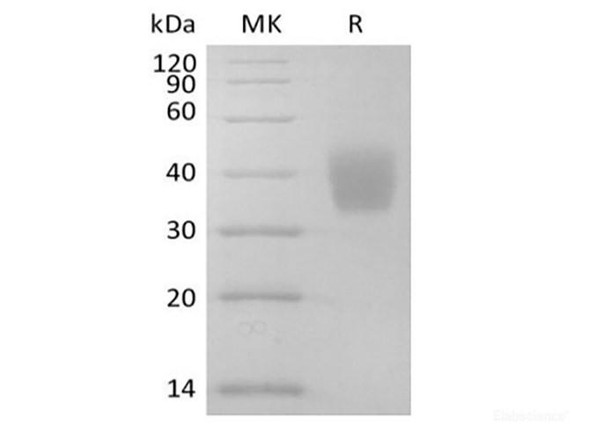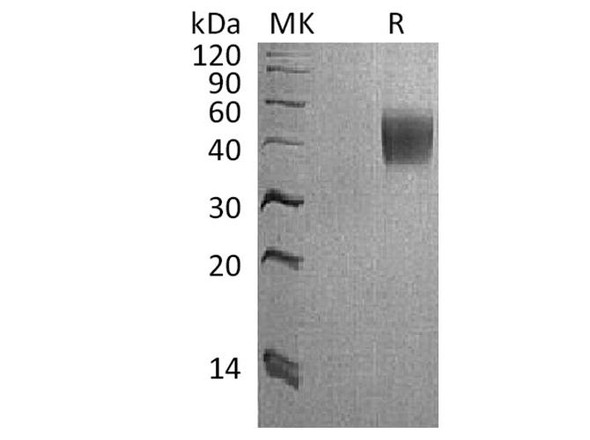| Sequence: | Met26-Arg232 |
| Accession: | G7Q0S7 |
| Storage: | Generally, lyophilized proteins are stable for up to 12 months when stored at -20 to -80°C. Reconstituted protein solution can be stored at 4-8°C for 2-7 days. Aliquots of reconstituted samples are stable at < -20°C for 3 months. |
| Shipping: | This product is provided as lyophilized powder which is shipped with ice packs. |
| Formulation: | Lyophilized from a 0.2 μm filtered solution of 20mM Tris-HCl, 100mM Glycine, pH 7.5. Normally 5 % - 8 % trehalose, mannitol and 0.01% Tween80 are added as protectants before lyophilization. Please refer to the specific buffer information in the pr |
| Reconstitution: | Please refer to the printed manual for detailed information. |
| Background: | Interleukin-4 receptor subunit alpha(IL-4RA), alos known as Soluble IL-4 receptor subunit alpha, belongs to the type I cytokine receptor family and type 4 subfamily. It expressed in both Th1 and Th2 cells. It functions as receptor for both interleukin 4 and interleukin 13 and couples to the JAK1/2/3-STAT6 pathway. The IL4 response is involved in promoting Th2 differentiation. The IL4/IL13 responses are involved in regulating IgE production and chemokine and mucus production at sites of allergic inflammation. In certain cell types, IL-4RA can signal through activation of insulin receptor substrates, IRS1/IRS2. The functional IL4 receptor is formed by initial binding of IL4 to IL4R. Subsequently it recruits to the complex of the common gamma chain. In immune cells, IL-4RA creates a type I receptor. In non-immune cells, it forms a type II receptor with of IL13RA1. IL4R can also interact with the IL13/IL13RA1 complex to form a similar type II receptor and interacts with the SH2-containing phosphatases, PTPN6/SHIP1, PTPN11/SHIP2 and INPP5D/SHIP. |










